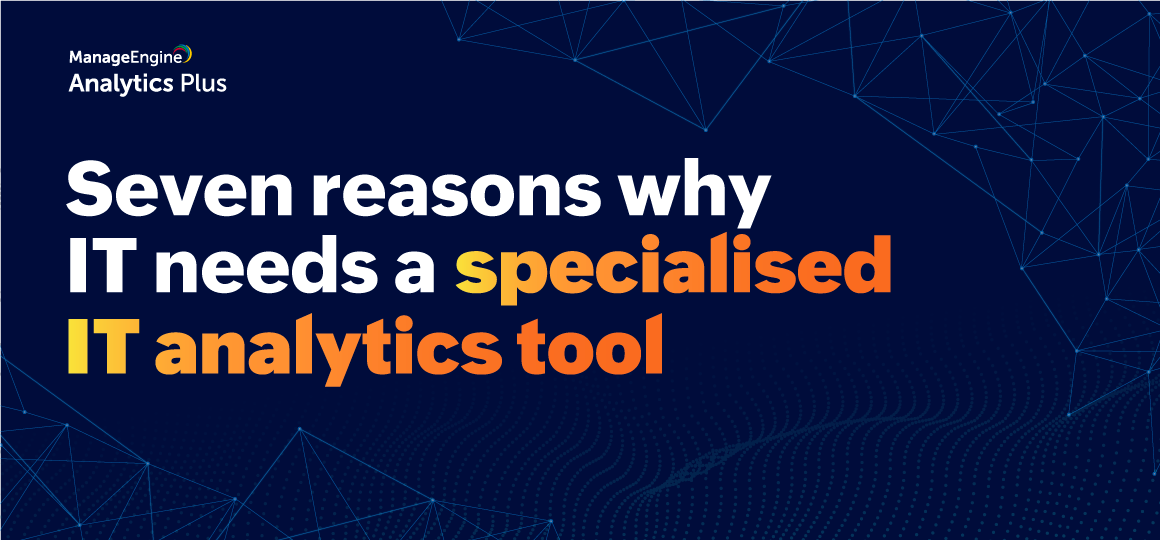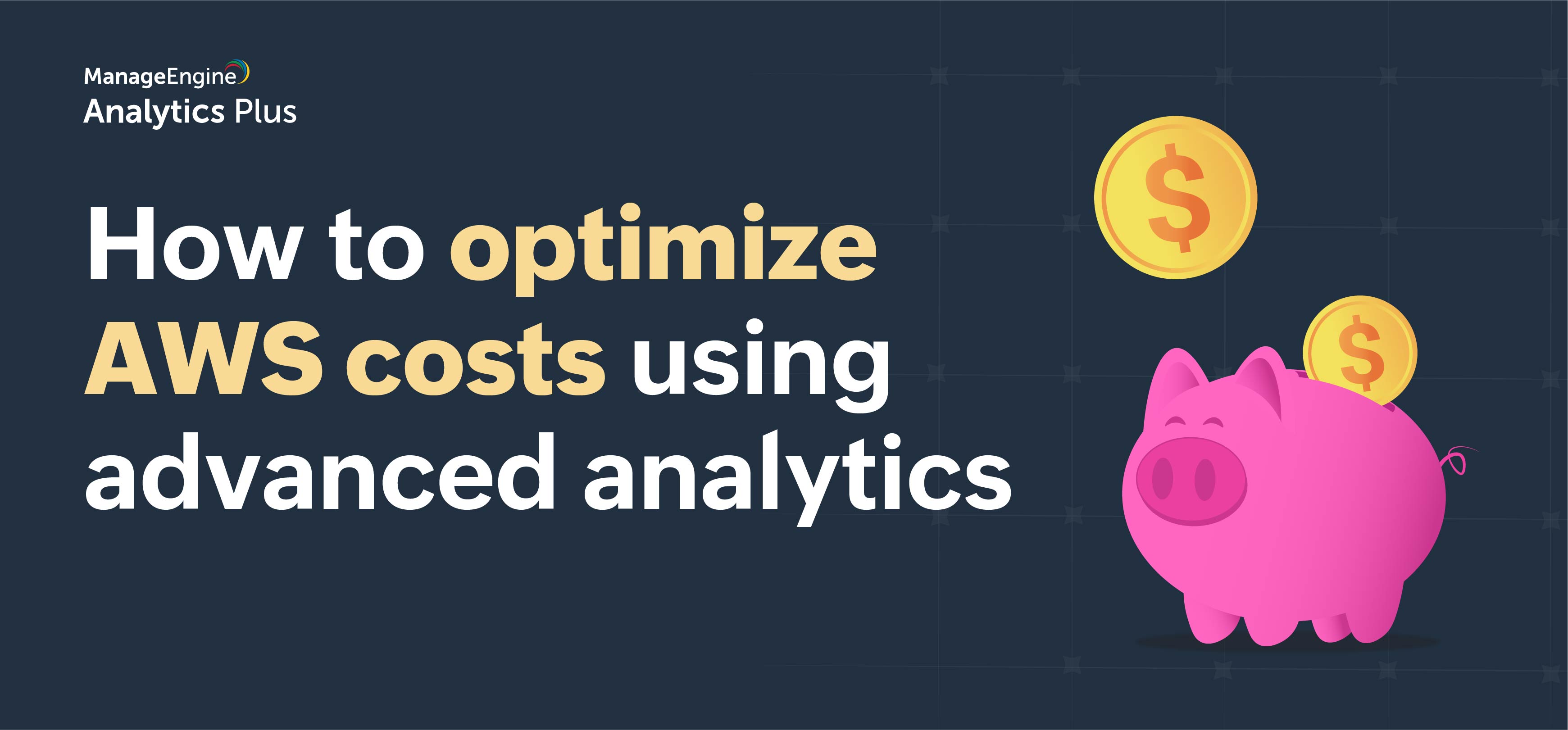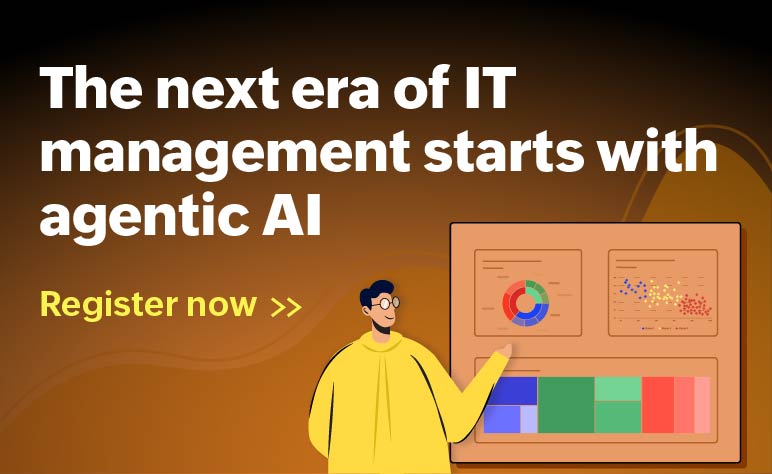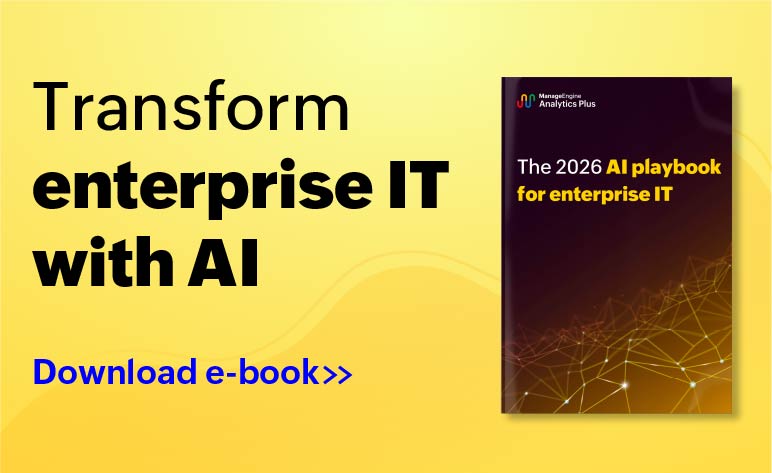- HOME
- ITOps Analytics
- Off-the-shelf analytics just won't deliver results for IT—here's why IT needs a specialized analytics tool
Off-the-shelf analytics just won't deliver results for IT—here's why IT needs a specialized analytics tool
- Last Updated: July 1, 2024
- 415 Views
- 8 Min Read

Analytics helps visualize data and present it in a way that simplifies decision-making, which makes it an integral part of the application stack an organization invests in. However, IT departments usually get left out or have little say when it comes to analytics initiatives. This is ironic because IT systems generate a lot of data that, when put to the right use, can help make crucial decisions that help the organization generate more revenue, cut costs, operate more efficiently, and much more.
One of the main reasons IT gets the short end of the stick is that IT data is unique. Compared to other business data that's the primary focus for analytics initiatives, IT data is vast, complex, and generated at high velocity. These characteristics make organizations almost turn a blind eye toward IT data analytics. Another problem is that IT data requires a specially designed IT analytics solution that can accommodate high volumes of complex data coming in at a fast pace. In this article, we'll explore seven reasons why IT needs specialized analytics software.
1. Domain expertise for complex data
An IT team, though looked at as a single entity, is actually made up of several different departments like IT services (hardware and software problem solvers), the help desk team, the network operations team, and the endpoint management and security team. As their names suggest, these departments have different areas of focus but they have to work together collectively to ensure business continuity.
IT departments generate and analyze large volumes of complex data that are very subjective to the specific areas of focus. The collective marriage of this data is what represents the overall health of IT in an organization. Bringing this data together requires a deeper understanding of how these different functional areas of IT impact and influence each other. For example, IT analytics software should have the built-in intelligence to know that a major network outage is bound to flood the help desk with tickets from employees not being able to access resources that allow them to perform their day-to-day duties. This allows the software to send notifications about such events as soon as they're detected.
Deeper domain knowledge of IT operations is necessary in order to highlight the right metrics at the right time to help organizations stay on top of their game. However, generic business intelligence and analytics applications take a build-it-yourself approach that requires IT teams to put in the time and effort to understand the complex, raw data generated by IT operations, understand the underlying correlation between various IT departments, and build the analytics themselves. This is one of the main reasons why organizations take an extensive amount of time to realize the value of analytics.
Specialized IT analytics software, on the other hand, has the intelligence to look for important metrics, find correlations in IT data, and highlight important metrics that help decision-makers make the right call.
2. Out-of-the-box connectors for popular IT tools
A typical IT department uses anywhere between 10-15 applications that help it run and manage operations 24/7. These IT applications hold valuable information that can be used to:
- Develop an overarching view of operational health.
- Analyze the efficiency of operations.
- Look for security loopholes or breaches.
- Monitor IT staff performance.
- Find potential cost-saving avenues.
- Calculate IT budget needs.
The biggest challenge that organizations face is tapping data from these applications, identifying sections of it that are useful for analysis, and building the right visualizations to allow for a larger audience to consume the data and take necessary corrective action.
IT applications in general are fine-tuned for data collection and storage. They are not the best when it comes to making data available for real-time or historical analysis. The time-consuming effort of understanding data extraction APIs and using them to extract data from these applications is a major barrier that prevents organizations from utilizing IT data for analysis.
An IT analytics application that has out-of-the-box connectors for popular IT applications can extract data, model it, and generate prebuilt reports and dashboards that can cut down the time for analysis by almost 80%. IT teams don't have to do the heavy lifting themselves. Since the data is made available in an easy-to-understand format, CIOs, IT managers, and supervisors can create organization-specific reports and dashboards themselves without relying on analysts or database administrators.
3. AI-enabled auto-interpretation
IT analytics applications that take advantage of AI and NLP are capable of understanding direct questions and answering them in the form of visualizations. For example, questions such as, "How many alarms are expected in the next 12 hours?" or "What is the average cost per outage?" can be easily understood by the NLP engine and answered in the form of reports. Such simplicity in data analysis means sensitive and confidential corporate data doesn't have to be exposed to the end user because their questions are answered directly. This enables analytics to be included in sections of the organizational hierarchy that were previously kept out of analytics initiatives and opens up channels for data democratization across the organization, which many companies struggle to put into practice.
AI can go a step further and remove another aspect of analytics that predominantly requires human effort: interpretation. Effective analysis of data requires two components: a robust analytics application and an end user with a good eye for details. Human interpretation of data can be very subjective and biased depending on the circumstance and the individual who is analyzing the data. An AI-enabled IT analytics solution overcomes this bias by auto-interpreting the data and offering direct insights. All the end user needs to do is take appropriate actions to overcome the highlighted issues. AI-enabled IT analytics applications can make the process of finding insights very fruitful in the least amount of time.
4. Highly scalable to accommodate large volumes of data
Depending on the size of the organization, hundreds of network devices are monitored, thousands of security events get logged, and millions of lines of logs are created by IT management applications at any given point in time. Data on this scale requires a robust analytics application that is capable of processing, storing, and analyzing millions of rows of data every few minutes.
Though generic analytics applications are capable of analyzing large volumes of data, the speed at which modern IT applications generate data is unprecedented and cannot be handled by off-the-shelf analytics applications.
Specialized IT analytics applications use intelligent algorithms, batch processing, and auto-prioritization of data based on criticality. This ensures high-risk activities such as security events are detected immediately and reported to security analysts. Users can configure event-based thresholds and choose to be notified when set limits are breached. This helps avoid important metrics from getting buried in a mountain of data.
5. Real-time analytics coupled with real-time alerts
There are two types of IT metrics: those derived from historical data and those derived from real-time data. An example of historical analysis is analyzing help desk incidents to determine the right number of technicians required to run operations smoothly; an example of real-time analysis is displaying the details of a user accessing a privileged user account during non-business hours.
While traditional analytics applications are good at historical analysis, they fall short when it comes to analyzing data in real-time. Analyzing real-time data requires adapting to the velocity at which IT applications generate it. IT analytics applications are fine-tuned for this specific purpose. Services such as Live Connect allow direct, real-time connections to the data source, and help bypass the traditional mode of periodic synchronization and storage of data for analysis. Live Connect allows users to look at real-time data on-demand. This is an essential aspect of IT analytics applications that allows IT admins to rectify issues as soon as they occur, leaving no room for exploiting security loopholes.
Moreover, when real-time analytics is coupled with real-time alerts, it buys organizations time to react to opportunities and threats faster. In our earlier example, once anomalies are detected in privileged account access, instant notifications can be sent to IT staff informing them about the anomaly in access patterns, which can prompt instant action and prevent a potential security breach.
6. Custom visualizations
Bar graphs, pie charts, ring charts, and the like are common visualizations that are available in any run-of-the-mill analytics application. IT data, however, demands itself to be represented in custom formats. A good example of this is displaying the health of business services. An organization typically needs at least 4-5 services for the business to run as usual. Companies like Walmart or Target need to ensure their point-of-sale machines are connected to their banking systems to enable store sales, their websites are responsive enough to process online orders, and their help desk systems are operationally available to accept customer complaints. In the eyes of IT, each of these systems makes up a business service. These business services should not only be operational but also work seamlessly with other business services.
The perfect way to represent the availability and operational status of these business services is a hierarchy chart that displays the services' health and interconnectivity with other business services. IT analytics applications often allow users to use custom images to represent the health of these services in a way that's easy and obvious for analysis.
7. Built-in security
IT applications carry a lot of sensitive information; should this information fall into the wrong hands, it could spell disaster. IT applications hold information such as IP addresses, CMDB relationships, and personal user information that can be used for security exploits. Analytics applications are designed to gather all this information in a single location for cross-functional analysis, which makes them a gold mine of organizational data. Many companies prefer to keep their analytics data on-premises for this same reason.
IT analytics applications should offer the flexibility of deployment on-premises or in the cloud depending on the sensitivity of the data processed and the individual preference of the organization. Additionally, functions such as masking sensitive data, two-factor authentication, allowing role-based access, and data encryption are key elements of a well-rounded IT analytics application.
Conclusion:
Analytics software that isn't custom-built for your IT operations cannot provide critical information at the right time and might end up costing the business time, money, and effort to keep services online. On top of it all, without getting complete visibility into IT by correlating data from multiple applications and sources, finding an antidote to common IT problems, errors, and issues is next to impossible, plunging IT into further operational chaos.
Choosing an analytics tool tailor-made for IT requirements not only takes the weight of analytics off your shoulders, but it also provides a way for you to protect yourself from operational disruptions. With time, IT analytics tools can provide you with insights that, if applied diligently, can help you slowly get out of fire-fighting mode and keep your infrastructure trouble-free.
Note:
This blog was originally written by Rakesh Jayaprakash, Product Manager at ManageEngine, and published in Dataquest.






